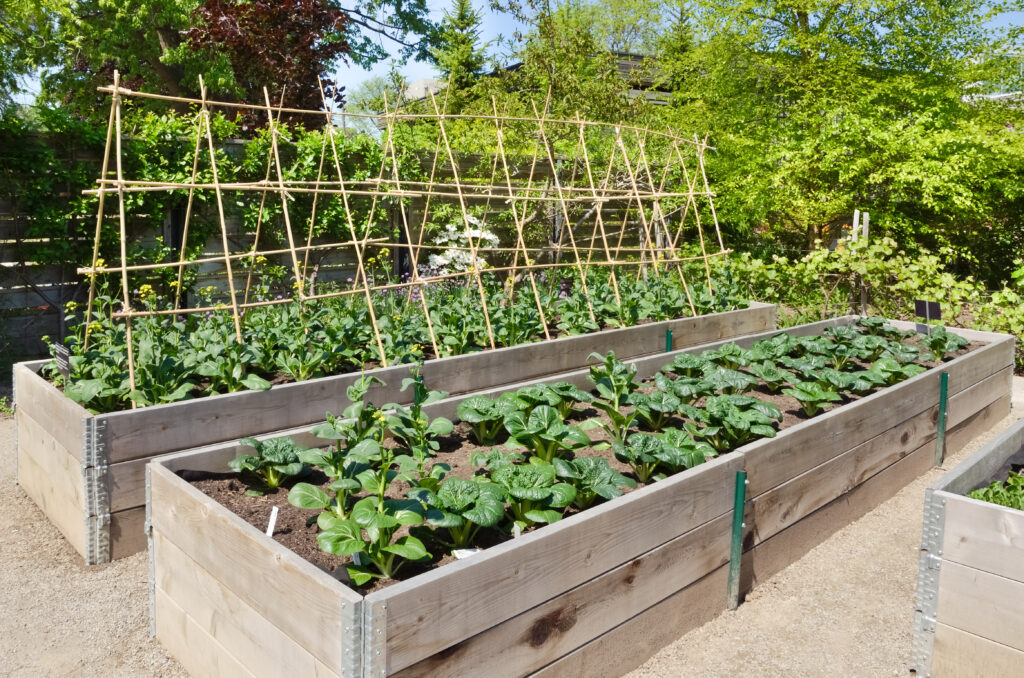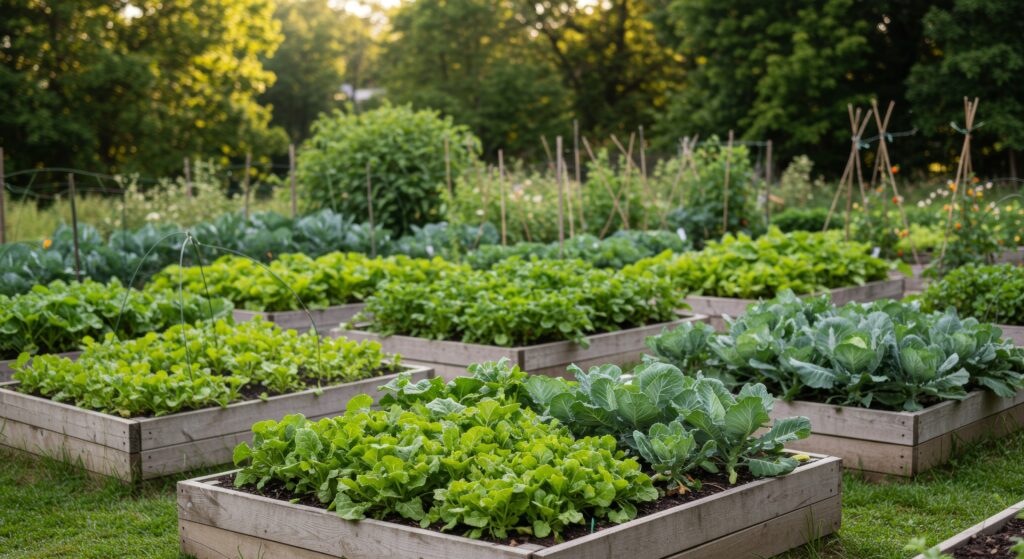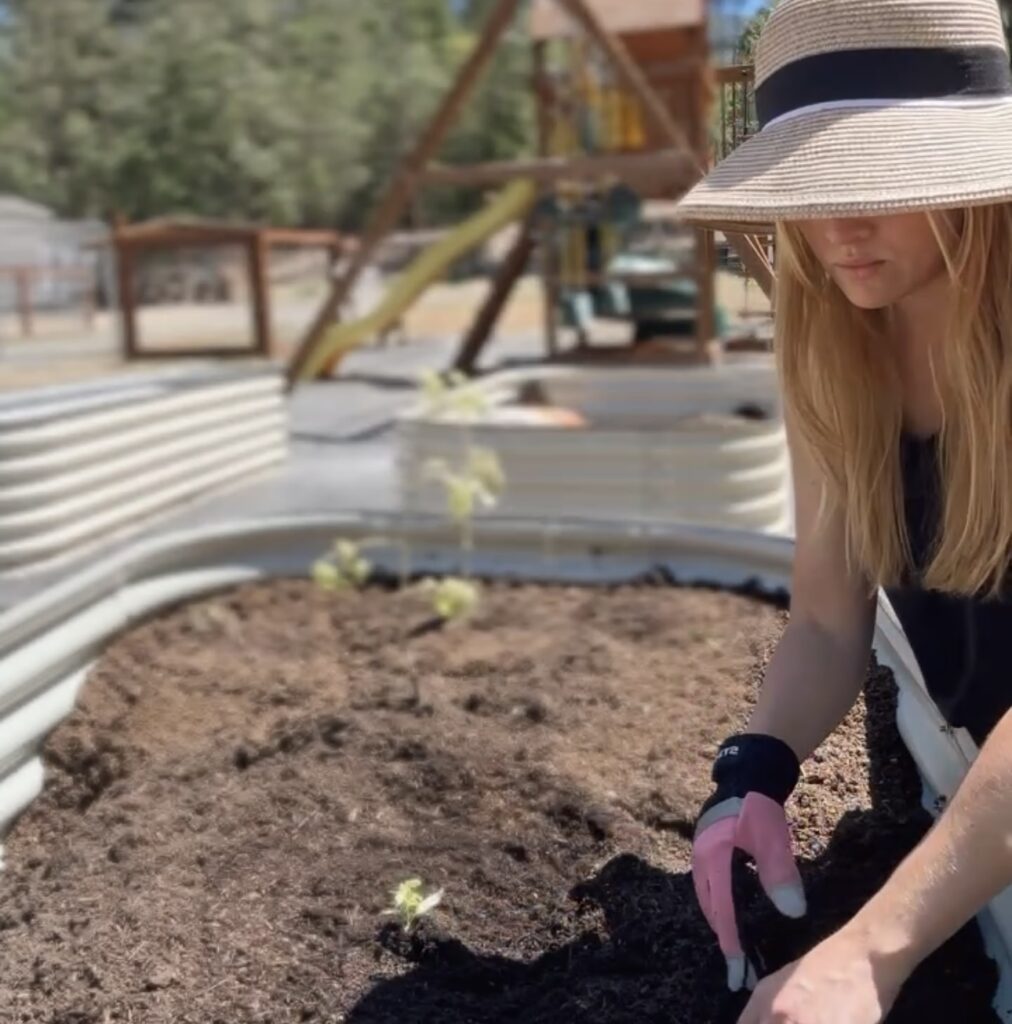How to Build, Fill, and Plant for Success!

Raised bed gardening took me from the old-fashioned route — tilling up a patch of ground and hoping for the best. Let’s just say my weeds grew better than my vegetables that year. Fast forward to today, and I’m a raised-bed gardening convert. Raised beds make it easier to control your soil, keep weeds at bay, and grow more food in less space. Whether you’re short on space, dealing with poor soil, or just want a garden that’s easier on your back, raised beds are a game-changer. Here’s how to start your own.
Why Choose Raised Beds?
Raised beds aren’t just pretty — they’re practical. Here’s why they work so well:
- Better soil control – You fill them with the perfect mix from day one.
- Fewer weeds – Less bare ground means fewer invaders.
- Improved drainage – Great for heavy clay or soggy yards.
- Easier on your back – Higher beds = less bending.
- Season extension – Soil in raised beds warms up faster in spring.
My raised beds made gardening manageable when I was pregnant and had toddlers underfoot. No more crawling through muddy rows!

Choose the Right Location
Just like any garden, raised beds need at least 6-8 hours of direct sun. Choose a spot close to a water source — lugging watering cans across the yard gets old fast.
- Avoid placing beds directly under large trees (roots will invade the beds).
- If possible, place the beds where you can see them daily — out of sight, out of mind is real.
I put my raised beds right outside my kitchen door, so I can grab herbs and greens without putting on shoes.
Build or Buy Your Raised Beds
You can build your own from basic lumber or buy pre-made kits — either works! We have built some purchased beds from the local home depot until we got more serious about the garden and decided to go with the Vego raised beds and they have been amazing!
(This post contains affiliate links and does help a family farm)

DIY Raised Bed Tips:
- Use rot-resistant wood like cedar or redwood.
- Standard height: 12-18 inches works for most veggies.
- 4 feet wide is ideal — you can reach the middle without stepping inside.
Raised Bed Alternatives:
- Galvanized stock tanks – Durable and great for small spaces.
- Fabric raised beds – Inexpensive and easy to move.
- Cinder block beds – Cheap and sturdy (but watch for heat buildup in summer).
My first beds were made from reclaimed lumber — they lasted 6 years before needing replacement.
Click here if you are looking for what to use!
Fill Your Beds with Healthy Soil
The best part of raised beds? You control the soil! I have written about this in so many posts but it really is such an important step! Check out this post How To Build Healthy Soil For A Thriving Garden and skip the guesswork and start with a balanced mix:
Ideal Raised Bed Soil Mix:
- ⅓ compost (homemade or purchased)
- ⅓ topsoil (screened and weed-free)
- ⅓ aeration material (peat moss, coconut coir, or aged leaf mold)
For deep-rooted crops like carrots, I add a little sand to keep the soil loose.
Shortcut Option:
Many garden centers sell raised bed soil blends — perfect if you’re filling a lot of space fast.
Plan & Plant Your Raised Bed Garden
Raised Bed Layout Ideas:
- Square foot gardening: Divide the bed into 1-foot squares and plant 1 crop per square.
- Companion planting: Tuck in pest-repelling flowers and herbs with your veggies.
- Vertical supports: Trellises, cages, and arches save space in small beds.
Best Crops for Raised Beds:
- Leafy greens: Lettuce, spinach, kale
- Root crops: Carrots, radishes, beets
- Compact veggies: Peppers, bush beans, cucumbers
- Herbs: Basil, thyme, cilantro, parsley
A “salad bed” close to the house with lettuces, radishes, green onions, and basil — everything I need for quick meals.
Easy Maintenance for Healthy Plants
Raised beds are lower-maintenance than traditional gardens, but they still need regular care:
- Mulch to suppress weeds and retain moisture.
- Top up with compost each season to refresh nutrients.
- Water deeply and consistently — raised beds dry out faster than in-ground gardens.
- Crop rotation is still important to avoid soil-borne diseases.
I tuck a few marigolds and nasturtiums in every bed for natural pest control and pops of color.
FAQs About Raised Bed Gardening
Raised beds are perfect for beginners and seasoned gardeners alike. They give you better control, help you grow more in less space, and make gardening more manageable — whether you’re feeding your family or just learning the ropes. Start with a few small beds, keep notes on what works (and what doesn’t), and you’ll have a thriving raised bed garden before you know it.
Looking for more helpful steps?
Click here for the best tools and raised beds that helped me get started too
